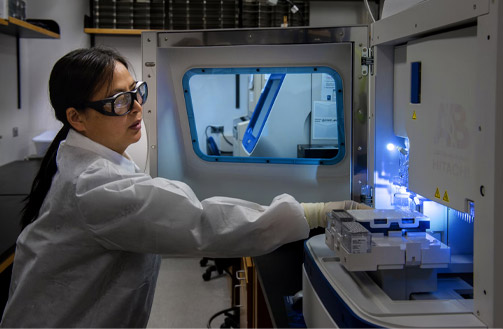
Blog
Wastewater Analytics: A Key Tool in the COVID-19 Fight

June 30, 2020

“I’ve been dealing with viral outbreaks for the last 40 years. I’ve never seen a single virus — that is, one pathogen — have a range where 20 percent to 40 percent of the people have no symptoms.” That’s what Dr. Anthony Fauci recently told the House Committee on Energy and Commerce.
For those concerned with public health, Dr. Fauci’s comment highlights an alarming fact about the coronavirus that presents a unique challenge. If people are asymptomatic, then they don’t know they have the virus — so they don’t get tested.
Accordingly, basing measures of prevalence on hospitalizations or deaths due to COVID means jurisdictions could be materially undercounting the severity of the outbreak. If public health professionals don’t have a handle on the prevalence of the disease, then how can they make good decisions about reopening, or conversely, locking down, a city, county or state?
Rep. Greg Walden (OR-2) asked Dr. Fauci and other experts at that same hearing, “What is it you need from Congress that you do not have now?” The witnesses outlined three things:
- Congressional support to make the COVID-19 response a sustainable effort;
- A response system that prepares us for future outbreaks;
- A fix for the current limitations in our national data infrastructure so we have real-world evidence in real-time.
The solution to those last two needs lies in wastewater analytics. Congress can help states, localities, universities, and even office parks and nursing homes get an early warning on emerging outbreaks and get a much better vantage point, supported by real-time data, into the prevalence of COVID-19.
What is wastewater analytics? Wastewater analytics involves the study of, well, poop. SARS-CoV-2 is shed in the stool of anyone who is infected — including those who are asymptomatic. That fecal matter makes its way into the effluent present in sewer systems. By taking samples and analyzing them, we are able to determine the degree to which the coronavirus is present in the population that uses a particular sewage system.
For a city using this wastewater analytics, it may be possible to identify an emerging outbreak of COVID-19, which then can help direct health resources, such as additional individualized testing stations, within that locality. Conversely, a diminishment or absence of the virus in wastewater can give added assurance that the reopening of schools and businesses is prudent.
It’s important to note that wastewater analytics cannot identify any one individual. Analytics are completely anonymized. But the aggregate data used in wastewater analytics is a powerful indicator of the spread of the disease, and it is obtained in a much more efficient and cost-effective manner than individualized testing.
As Congress, the Trump Administration, and public health officials at the federal and state levels continue to wrestle with whether and how to reopen schools and businesses while at the same time containing COVID-19, wastewater analytics plays a critical role in helping make sound, prudent decisions and directing scarce public health resources to the right places.Biobot Analytics
We analyze sewage for viruses, bacteria and chemical metabolites excreted in urine and stool. We map this data, enabling smarter public health decisions.
Written by Biobot Analytics
Biobot provides wastewater epidemiology data & analysis to help governments & businesses focus on public health efforts and improve lives.





